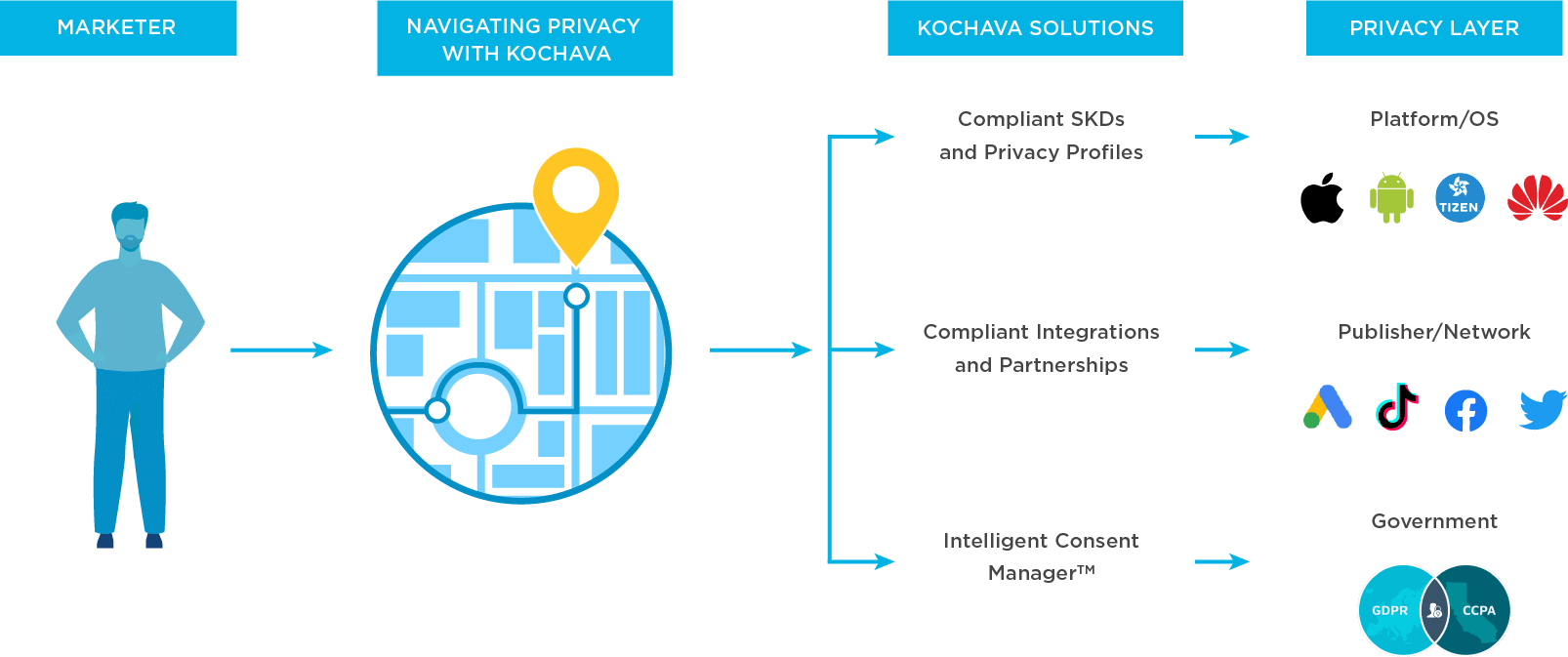MMPs Are Here to Bridge the Gap
Over the years, there have been growing concerns around user privacy and data. In fact, 67% of internet users are more alarmed than ever before about the state of digital privacy. Yes, as consumers we want our online data to be secure and private but most of us also enjoy ads that are targeted towards our likes and dislikes, opening up our horizons to new products, brands, and services. Advertisers, too, would like to provide users with relevant advertising while limiting identified user data. If only we can have both…
A win-win is closer than we think. Privacy enhancing technologies are on the rise and will undoubtedly be the closest solution to complete user privacy to date. As we become more versed in how privacy-enhancing technologies (PETs) function and find relevant cases to utilize this category of technology, we must also consider ad measurement. Measurement and attribution will need to evolve with these new privacy technologies and mobile measurement partners (MMPs) are here for it.
What are privacy-enhancing technologies and why are they important?
PETs are technologies (hardware and software) that are designed to balance privacy with usability. Examples of PETs include contact tracing, user locations, and electronic payment processes.

These technologies are important because they can regulate the amount of data that is processed to help protect personal information. In this time of increased regulations on data privacy and protection, PETs play an important role. Privacy breaches and data loss are harmful. Keeping data secure and private impacts the reputation of businesses and the trust of consumers.
Privacy-enhancing technology examples
There are a number of PETs that can be used in a variety of ways. Any type of technology that increases security while decreasing data loss can be considered a PET. Below are some examples.
Data masking
Data masking is the technique of changing the values of the data while using the same format as the original dataset. This creates a fake but true version of the original data. There are a few ways to mask data, such as:
- Reliable VPN
- Pseudonymization and obfuscation
- Data minimization
- Communication anonymizers
Cryptography
Cryptography is the process of encrypting sensitive data by utilizing algorithms and decrypting it once it arrives at its intended place. Only the sender and recipient have access to the data by encrypting the data before sending it and then unscrambling it upon arrival. There are a few types of cryptography techniques which include:
- Homomorphic encryption
- Secure multi-party computation (SMPC)
- Differential privacy/obfuscation
- Zero-knowledge proof (ZKP)
Privacy-enhancing technologies and ad measurement
In the near future, PETs will be, and in some cases already are being, incorporated into digital advertising to add an additional layer of privacy and security to user’s data: personal data will stay anonymized while targeted ads will be served to the correct audiences. Because of this, PETs and ad measurement will likely intersect to protect individuals’ personal data while still allowing for ad measurement.
One way PETs could be incorporated into ad measurement involves the use of differential privacy, which makes data unidentifiable while still allowing data to be measured and analyzed without revealing personal information. This would enable advertisers to measure campaign effectiveness without compromising user’s personal data.
Ad measurement could also utilize federated learning, a type of decentralized machine learning, which allows for the analysis of data across different devices and platforms without the need to aggregate the data. This could enable advertisers to gain insights into ad engagement across any device and platform without having access to private data.
Another potential solution involves the use of blockchain technology to allow reliable data sharing between advertisers and publishers, reduce fraud, and protect user privacy while still delivering the right ads to the correct audiences.
New technologies are on the rise to protect user privacy. We will likely see continued research and development between PETs and ad measurement, leading to better, more effective measurement strategies of personal data.
The future of ad measurement
While privacy enhancing technology is beneficial, it certainly adds complexity to ad measurement. That being said, it should still be pursued as a solution because user privacy is something that is front-of-mind for advertisers, brands, and partners alike. So how can we pursue user privacy while continuing to do our job as marketers?
Thankfully PETs are not the first privacy tool to be utilized. Others include:
- Apple’s AppTrackingTransparency (ATT) framework requires user permission to track activity across the web and apps.
- Apple’s SKAdNetwork which provides anonymous, aggregated and delayed campaign attribution insights for iOS marketers.
- Google’s Privacy Sandbox,which is coming to Android in 2024, will implement anonymized forms of measurement, ad targeting, and more.
- The General Data Protection Regulation (GDPR) is the EUs law for data protection and privacy.
- The California Consumer Privacy Act (CCPA) enhances privacy rights and consumer protection.
These are just a few examples of laws that have paved the way towards better user privacy. As more PETs come into play, MMPs will need to find ways to provide marketers with the data they need while staying in compliance with these regulations.
This is a great opportunity for growth and innovation within the ad tech space. As an MMP, Kochava wants to empower marketers and brands to embrace this new time of user privacy while also giving them the tools they need to succeed. Kochava has provided their customers with solutions such as a consent management platform for CCPA and GDPR, Privacy Profiles for the ATT framework, and compliant integrations and partnerships with super publishers and ad network platforms.

As user privacy becomes more optimized and secure with privacy enhancing technologies, Kochava will continue to be the trusted data steward between advertisers, privacy regulations, and users by providing privacy-first measurement solutions. Kochava empowers advertisers to do their work while providing them with the confidence that their data handling has met all the privacy regulations and laws.
If you are interested in learning more about Kochava tools, contact us at support@kochava.com or get started by checking out our solutions.



